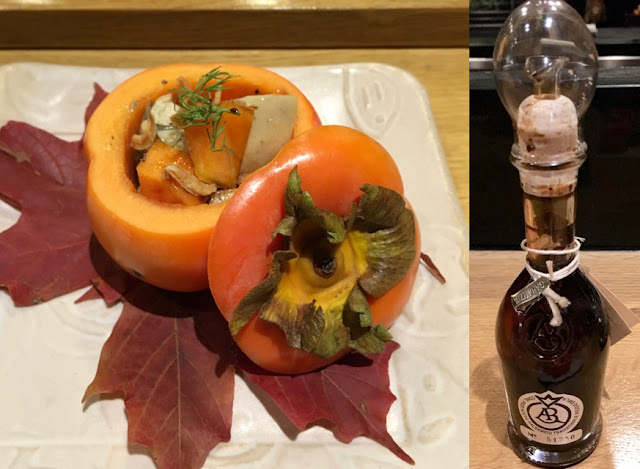Every time we go to our nearby gourmet grocery store, we can not resist getting some pork belly. This time we got about a 1 lb block. I made most of it into "Kakuni" 豚の角煮 but I sliced off some thin strips (called sanmai niku 三枚肉) to use in something else. I ended up making "buta-jiru" 豚汁. The reasons are multiple. When I posted "Rice with butter and soy sauce", somebody left a comment introducing us to a Japanese TV series called "Shinya shokudo" 深夜食堂 or "midnight diner" since one of the episodes was about "rice with butter and soy sauce". We managed to watch all episodes available and also a movie. More recently, new, at least we have not watched, episodes called "Tokyo series" became available on Netflix as a Netflix original series. The opening sequence of all these episodes shows "the master" making buta-jiru 豚汁. On the top of that, when I posted pork and vegetable stew (recipe from Mark's Izakaya book), I reminisced about "Buta-jiru" and cook-out picnics 炊事遠足 I had when I was in grade school. So, one weekend, I made buta-jiru for lunch.
There is no precise recipe for this. This is a sort of glorified miso soup with thinly sliced pork belly cooked with Japanese root vegetables and kon-nyaku こんにゃく.
Here you can see daikon, carrot, kon-nyaku and mai-take 舞茸 (hen-of-the-wood) mushrooms. I had just used up all the burdock root so this dish did not include any.
In the Shinya shokudo opening sequence, "the master" uses shiitake mushroom 椎茸 but I used mai-take since I happened to have it.
Ingredients (amounts are all arbitrary):
Sam-mai niku (thinly sliced pork belly)
Daikon, Carrot, mushrooms (shiitake or mai-take), kon-nyaku, gobo burdock root, onion (either regular onion or scallion. If you have it Japanese or "Tokyo" scallion is better).
Japanese Dashi broth
Miso (I used a mixture of Koji-miso and Aka-miso).
Vegetable oil for sautéing.
Directions:
I peeled and cut the root vegetables into bite sized pieces. I soaked the Gobo in acidified water for 10-20 minutes, washed and then drained. I parboiled the Kon-nyaku in water, then washed it in cold running water. Like the master, I hand torn the kon-nyaku into pieces. Hand tearing makes irregular surfaces on which the flavor can cling to (kon-nyaku does not have any flavor just texture so the clinging sauce gives it some flavor). I sliced the scallion on the bias.
I put a small amount of vegetable oil in the pan and sautéed the pork. When some fat rendered out and the pork changed color, I added the root vegetables and kon-nyaku (sans scallion) and mixed so that oil coated the surfaces. I then added the broth to cover the vegetables. I simmered it with a lid on for 20-30 minutes or until all the vegetables were cooked. I dissolved the miso using my miso-koshi 味噌漉しcontraption and added the scallion. Once it came to a boil, I turned off the flame. We had this as a weekend lunch. Although a bowl of rice and small pickled vegetable are usual accompaniments, we just enjoyed this soup/stew which was more than enough for us. By the way, this type of combination of dishes is called "Teishoku" 定食 or predetermined multi-item meals very popular in "public eateries" or 大衆食堂. In this particular case, "Butajiru teishoku" 豚汁定食 which is the only set menu item at the midnight diner.






































